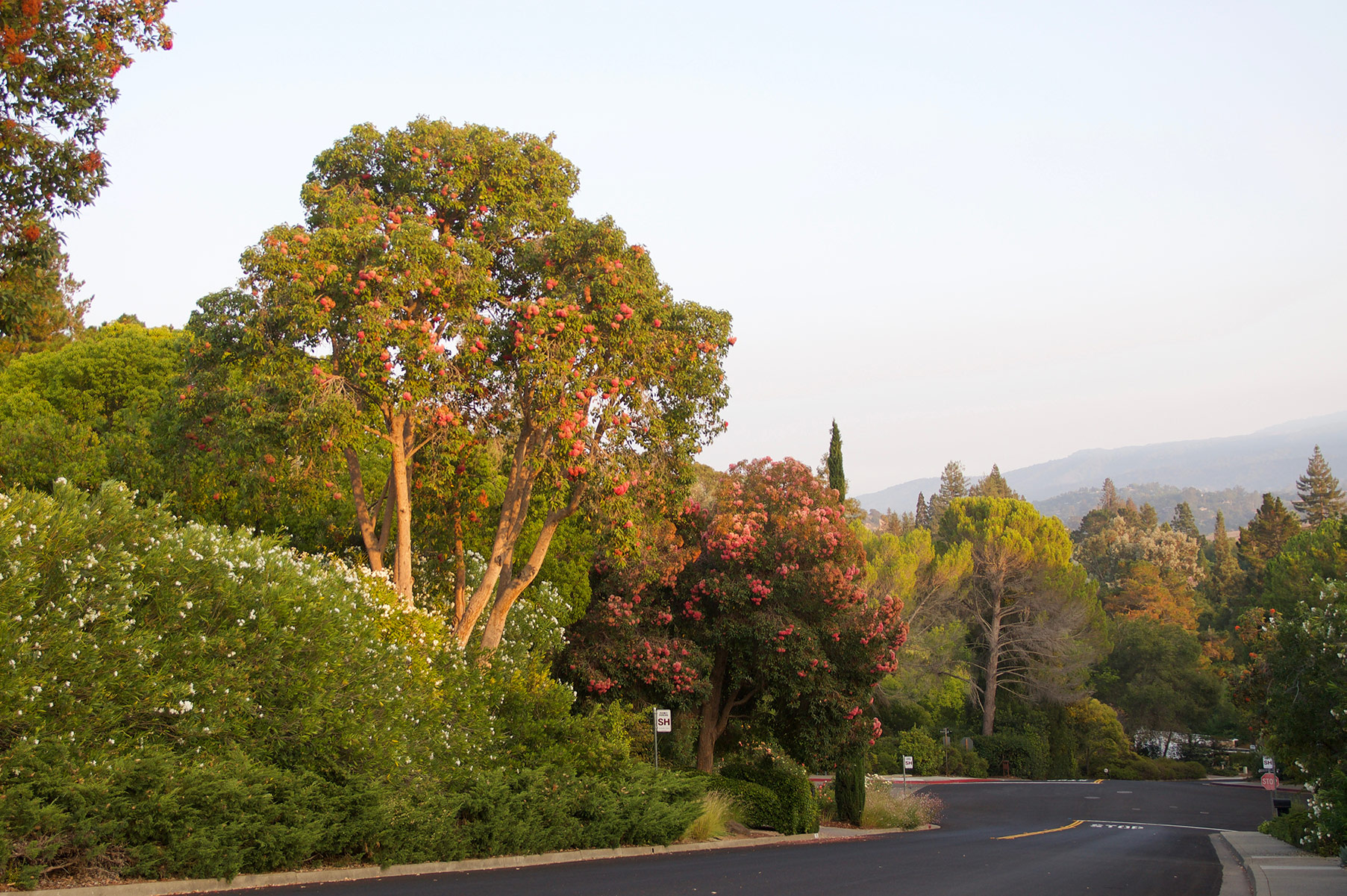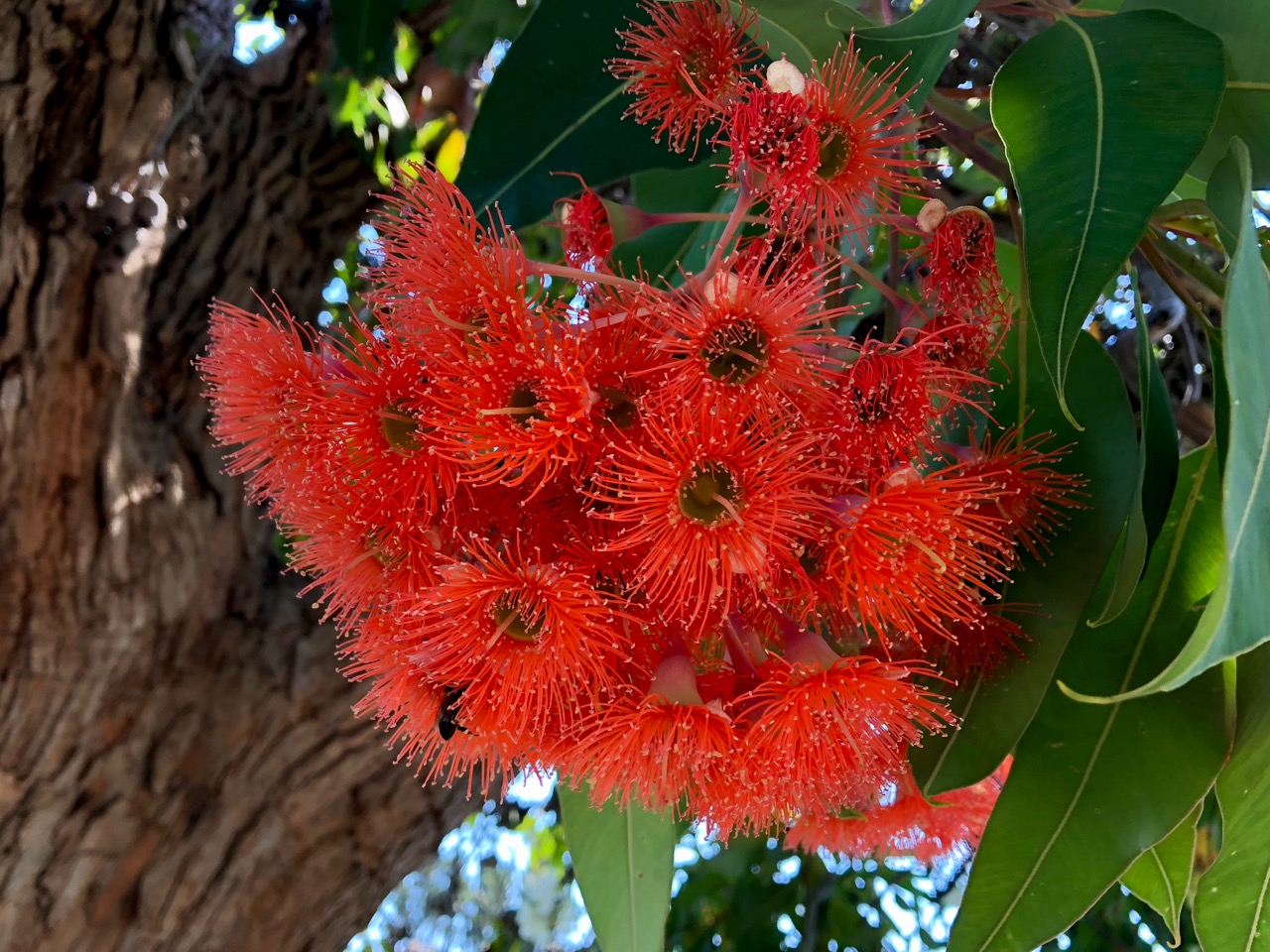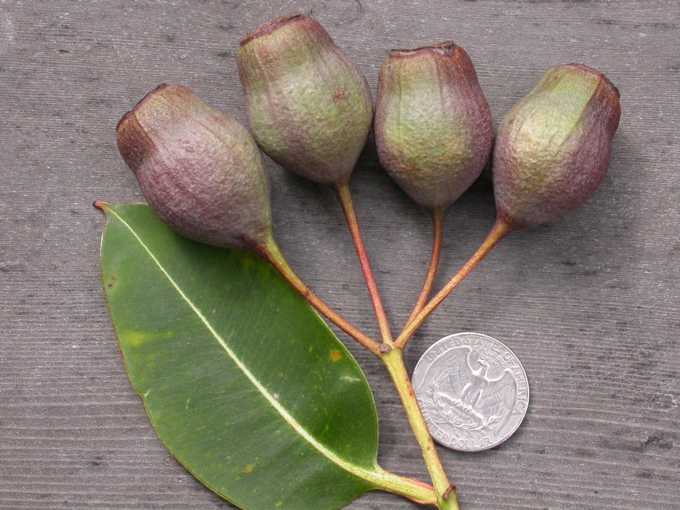Corymbia ficifolia
 red-flowering gum
red-flowering gum

People often mention to me that they have a eucalyptus tree and to get more information I ask them what color the flowers are. “What flowers?” is a common response. But not if they are talking about a red-flowering gum, which may be the best known ornamental eucalypt. The flowers come in an impressive terminal arrangement of many parts forming a hemispherical dome, or corymb, outside the leaf canopy. These flower heads can be pressed.
The mature leaves are broad and glossy, and the juvenile leaves are opposite and hairy, which looks odd, but is a feature of several species. With luck you may find some perfoliate juvenile leaves whose stem perforates the leaf. I think this represents the fusion that formed immediately above the cotyledons and below the first juvenile leaf pairs to have leaf stalks. Spinning gum (Eucalyptus perriniana) has the distinction of preserving perfoliate foliage into adult life.
Unlike most eucalyptus seeds, which are tiny (well over 1000 per ounce in most cases), those of Corymbia ficifolia have wings. The fruit, or gum-nut, is as big as the bowl of a small pipe, more than an inch across, is often used in dry arrangements, and is useful to a boy scout as a woggle to fasten his neckerchief.
Once my wife Helen and I were speeding along the edge of the Southern Ocean toward Albany, Western Australia, when she noticed a turn-off marked Ficifolia Road. This led to the home of the red-flowering gum, an uninhabited area of beach dunes, where all the trees are low and straggly. The modesty of the few stands strewn around this area of southwestern Australia belie the vast popularity of this tree in cultivation.
It is almost certain that the ornamentals in commerce are hybrid, having an admixture of C. calophylla (syn. Eucalyptus calophylla), a distinctly different, but related, larger tree with the same large fruit but little or no pink in the flowers. Supporting this theory is the diversity of flower color of the numerous trees on Lathrop Drive, Cedro Way, and Sonoma Terrace – worth inspecting for the colorful show in summer. On a color triangle the hues range between scarlet-orange, crimson-pink, and white. C. ficifolia is not frost tolerant; most campus specimens are on slopes where cold air can drain downhill. A fine low-branching specimen is at 901 Wing Place. A large specimen at 830 San Francisco Court was removed in 2021.
About this Entry: The main text of this entry is from the book Trees of Stanford and Environs, by Ronald Bracewell, published 2005. John Rawlings subsequently added the quote from Erickson et al. Cedro Way location added (Sep 2018, SP). SF Court removal noted; all locations up to date (Aug 2022, SP). Wing Pl location added; native range clarified (Jul 2023, SP).





